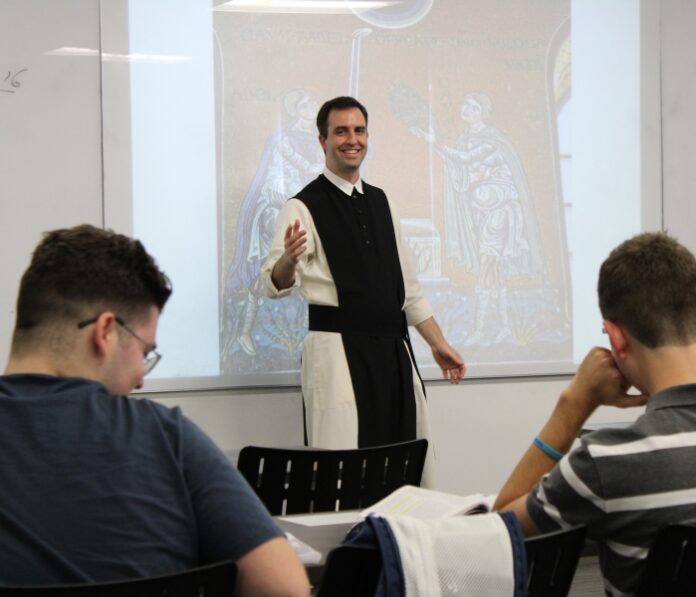
UD’s Spiritual and Intellectual Bedrock
The University of Dallas can trace its roots back almost a thousand years. It was in the year 1098 AD, in Citeaux, France, when a group of reform-minded Benedictine monks founded the new religious order that came to be called the Cistercians. Spurred by saint and Doctor of the Church Bernard of Clairvaux (when he wasn’t busy founding the Knights Templar and denouncing antipopes), the order soon became one of the most prominent in Christendom. Thus began an intellectual and spiritual tradition that enriched the western world for a millenium, and continues to this very day in Irving, Texas.
The Cistercian monks of Our Lady of Dallas Abbey have been with UD from the very beginning. In fact, before Our Lady of Dallas existed, the Cistercians were integral to the university, comprising half of the original faculty. Together with the Sisters of St. Mary of Namur, the diocese of Dallas and several prominent laypeople, the Cistercians helped found UD.
The first group of Cistercians came to Irving in 1954, at the invitation of Bishop Thomas Gorman, to help found this new Catholic university. These monks were refugees hailing from the abbey of Zirc, in Hungary. The Hungarian Cistercians had endured and escaped the ruthless persecution of their country’s new communist government, and dreamed of rebuilding their religious life and living out their vocation as teachers and spiritual mentors in their new home.
At UD, they have done that and much more. The Cistercians played a major role in both the founding of UD and the formation of its distinct identity. Not only do the monks represent UD’s history, but they continue to be an indispensable part of the university’s life and mission. Fr. Thomas Esposito, O. Cist. said of their role, “We maintain a spiritual and intellectual presence here, with the black and white habits providing teaching both intellectual and spiritual.” Familiar names such as Fr. Thomas, Fr. Joseph Van House and Fr. Stephen Gregg continue the long tradition of Cistercians teaching at UD, and remind us that the order remains as inseparable from UD’s identity as the spiritual is from the intellectual in the formation they offer.
From impromptu grab-a-Cistercian confessions to sunrise masses before school, UD’s sacramental life flourishes thanks in part to these holy monks. In the classroom or on the mall, the black and white habits represent for UD students a welcoming spiritual father and a friendly guide in the pursuit of wisdom and virtue. The Cistercians’ influence on campus life is immense and UD would not be the school that it is without them.
When asked about the effect the Cistercians had on his own experience as a UD student, Fr. Thomas said, “I had classes with Fr. Robert McGuire and Fr. James Lehrberger, and they were pillars of the university even then, both for their teaching and zaniness. I’m thinking of Fr. Robert and his famous escape stories during Charity Week. I’ve now taken on the mantle of Charity Week escape artist from him. He taught me all that I know.”
In addition to the spiritual, intellectual and comical formation that they provide, the Cistercians bring a certain ancientness to the university that grounds it in a long and storied tradition. The medieval monks carry a flame of history through the mid-century modern hallways of UD. As incarnate exemplars of the great Western Tradition that UD strives to preserve and promulgate, the Cistercians remind us that not only UD’s past, but also its present and future, are in black and white.